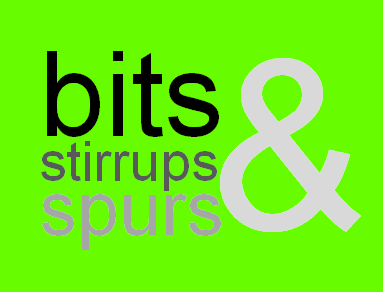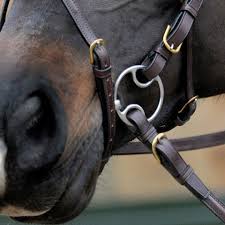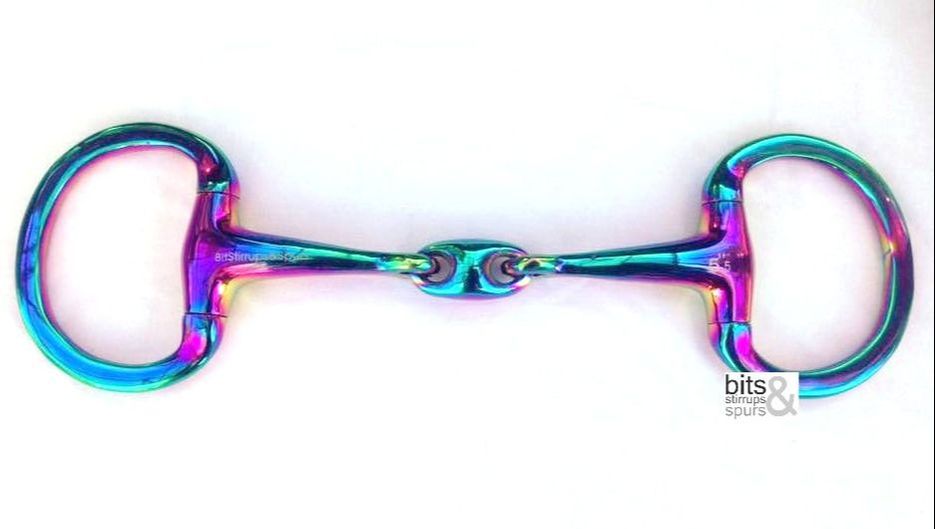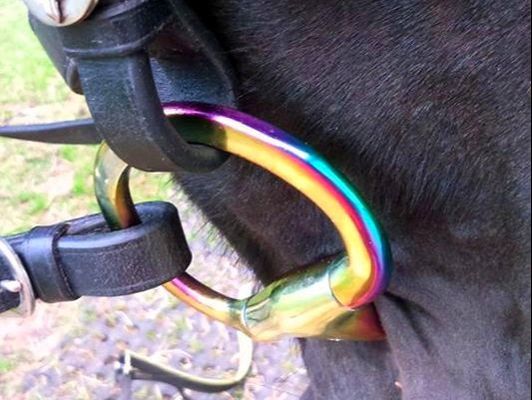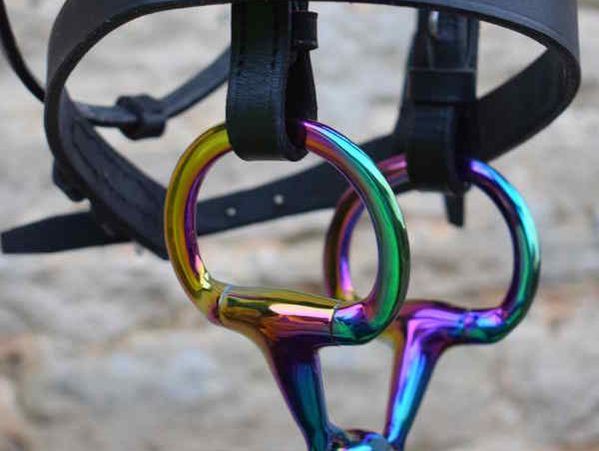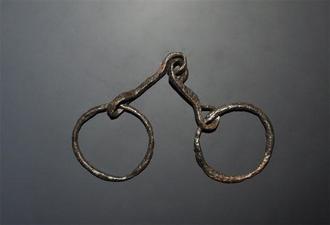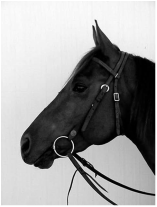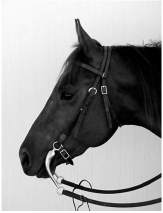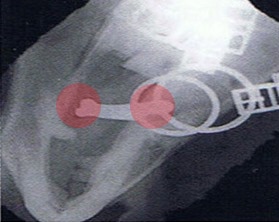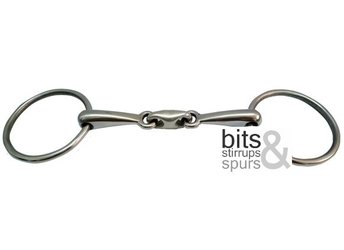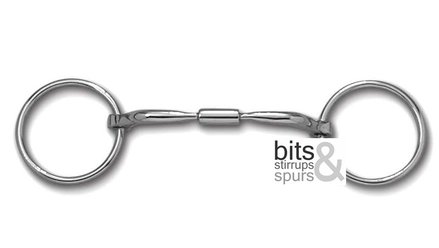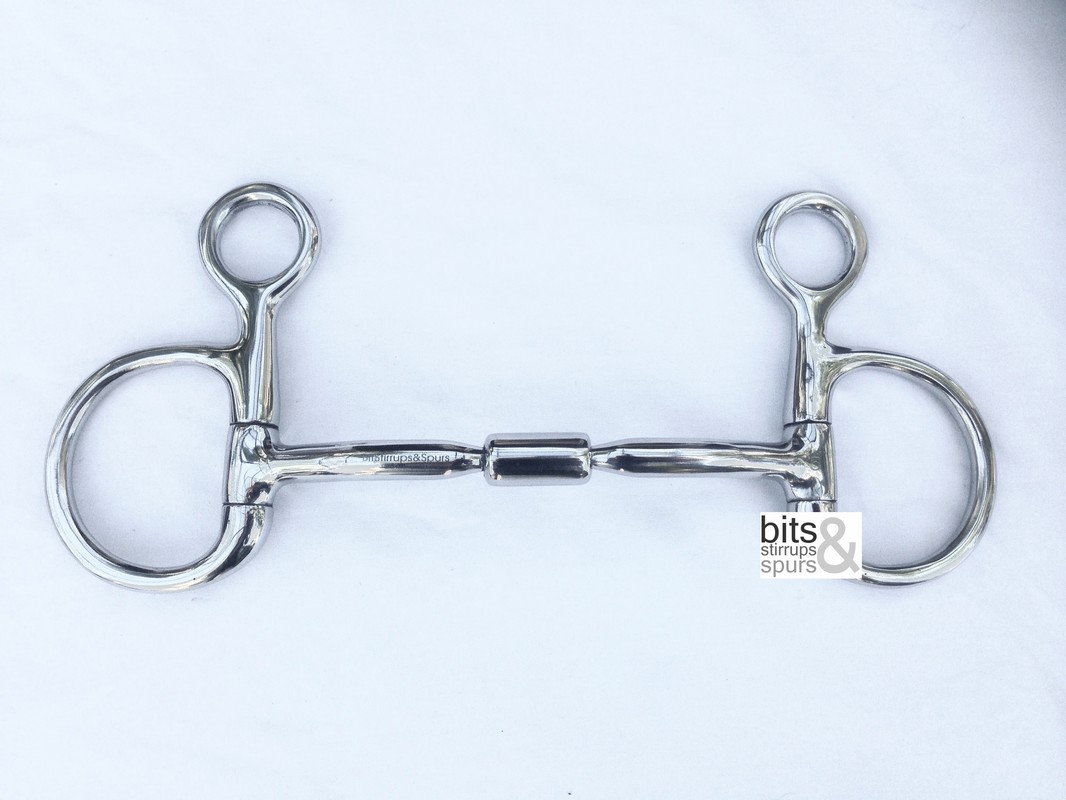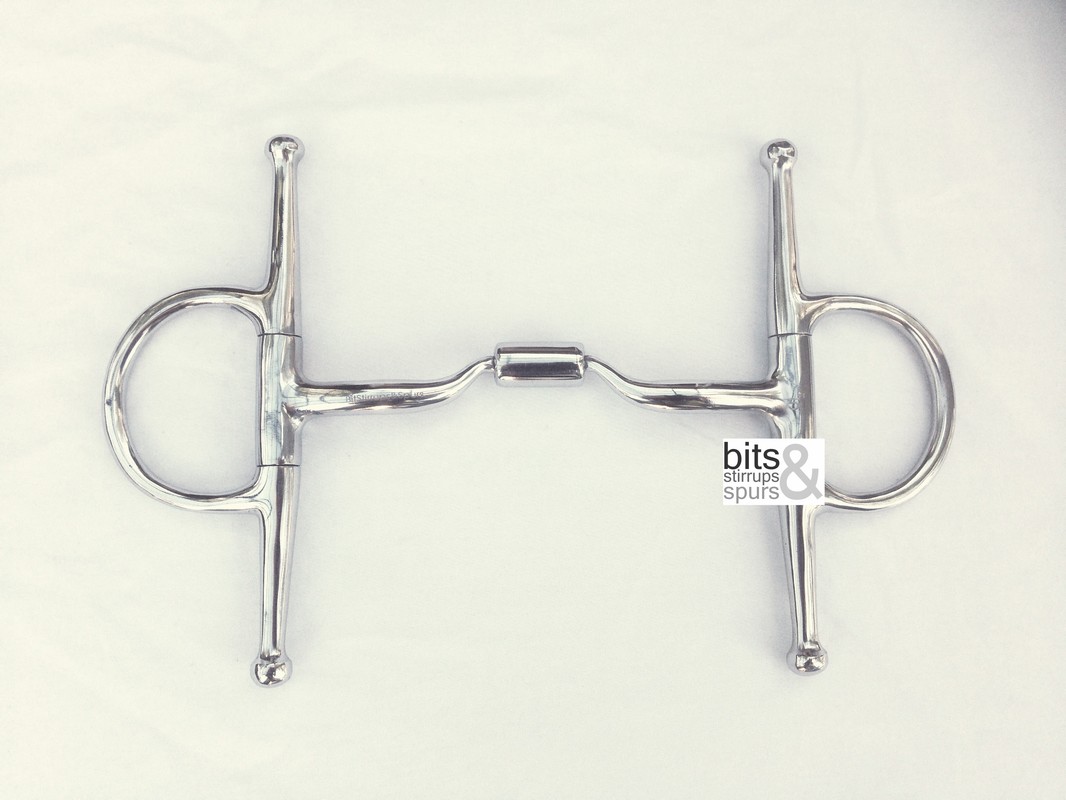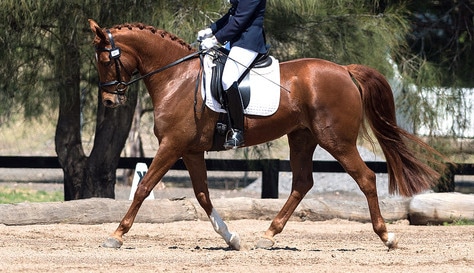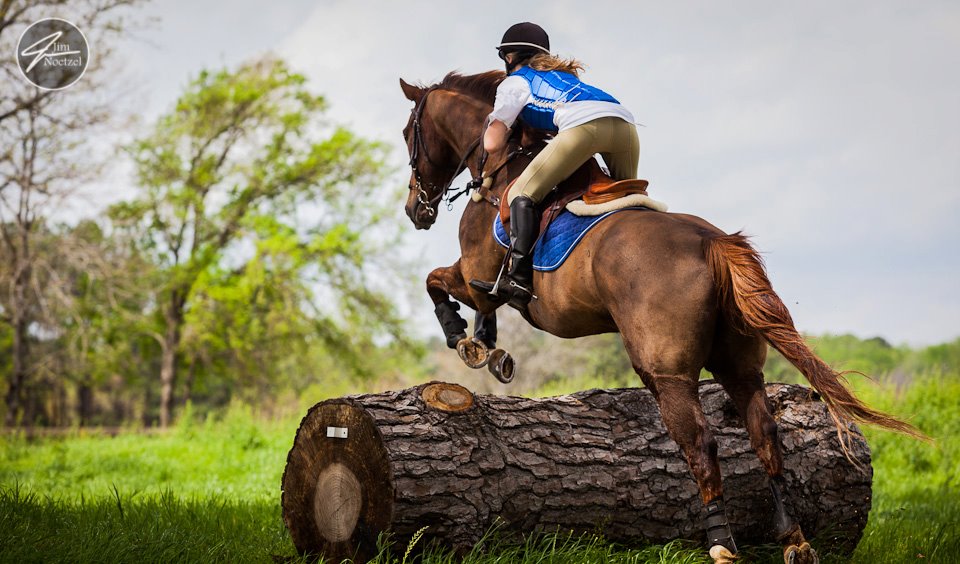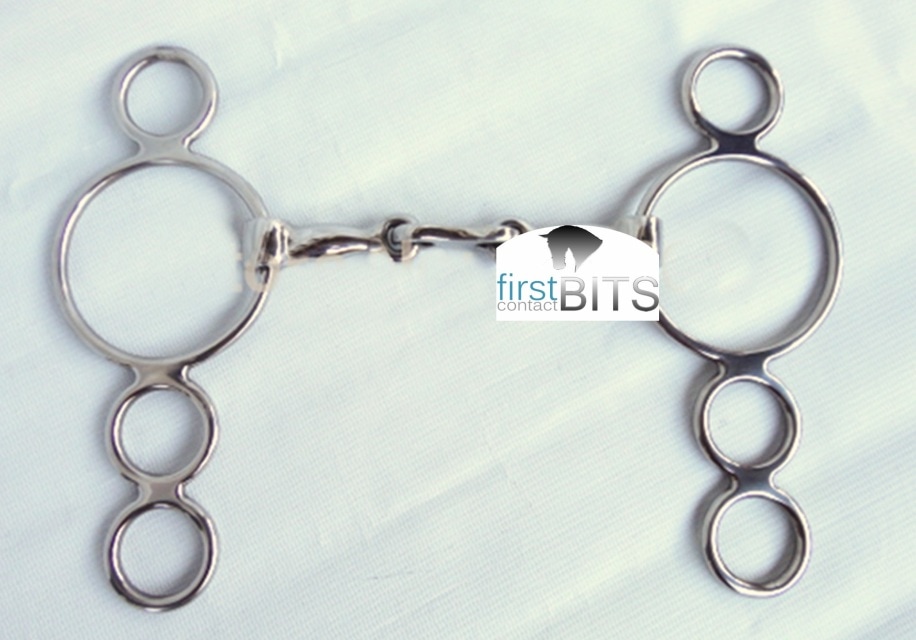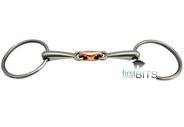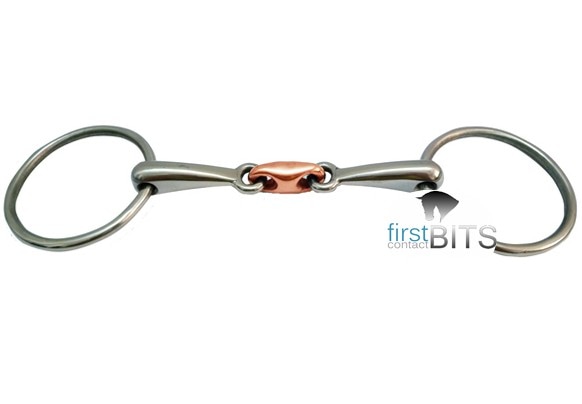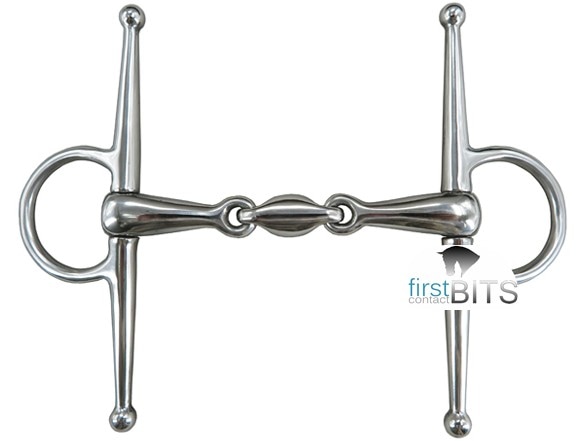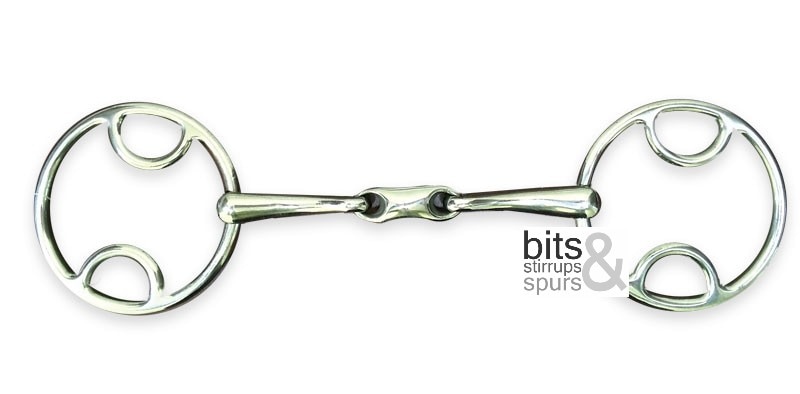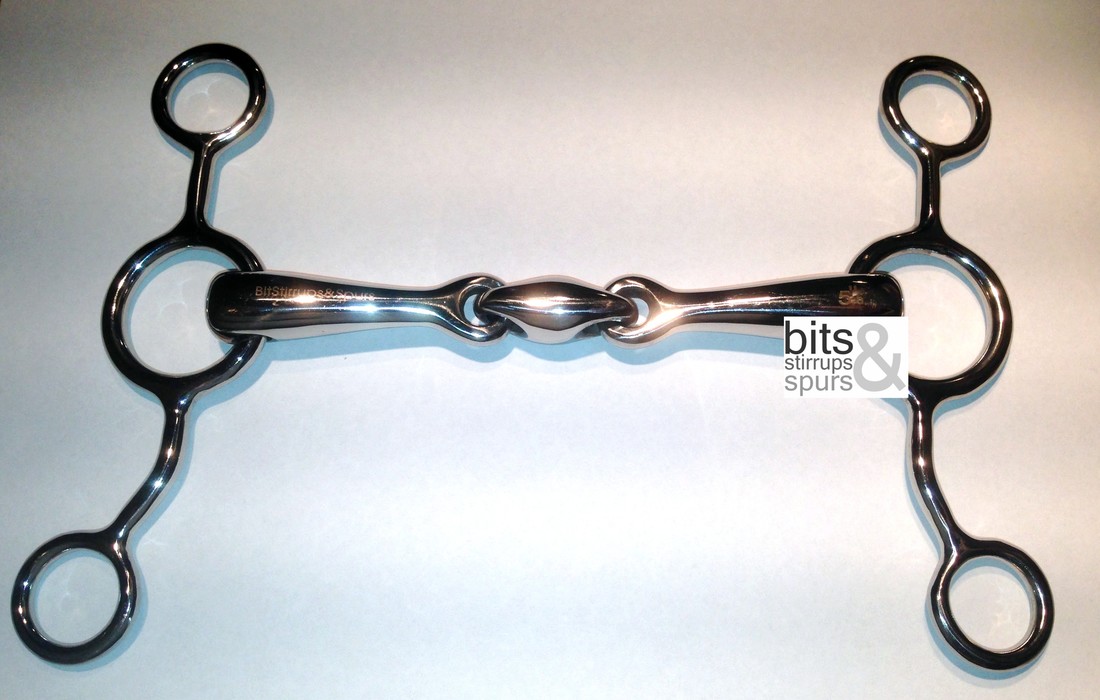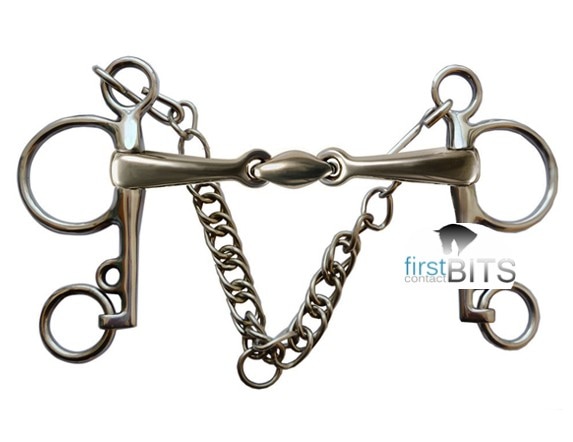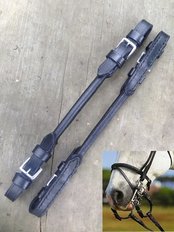The Bit Blog
A Beval: The perfect bit for a lttle more brakes & control.
Beval Bits are an intermediate type of elevator Bit. It offers a step-up from a standard loose ring action, for a touch more in the way of 'brakes' & control, but is less severe than a gag (eg. Continental 3-ring gag or Dutch gag; both of which certainly have their uses!). With one of these you can opt for just the right amount of poll pressure for your horse.
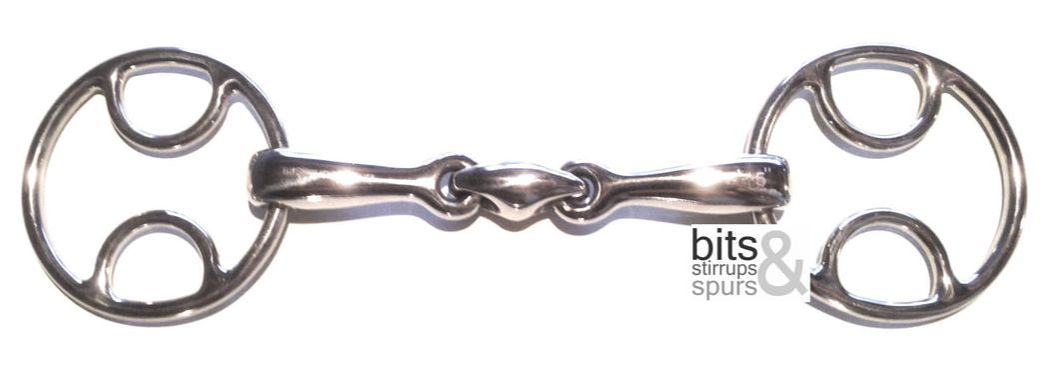
The Beval BIt (or bevel) is a modified loose-ring snaffle Bit that allows the rider to apply a moderate degree of leverage with the reins, and has 2 strength options.
A relatively new Bit design, the Beval snaffle, is sometimes called a "wonder Bit”. It uses the idea of a three-ring gag, but minimizes the leverage, making it a great intermediate Bit. This Bit can be a good option for horses that object to the leverage of a three-ring gag type Bit, but need a touch more braking power than a regular snaffle offers.
When used with a double jointed mouthpiece, the mouthpiece offers a higher level of comfort for the horse's mouth, as it helps to reduce pinching of the lips and bars and any unwelcome 'nutcracker' action.
Quick Overview:
- Full stainless steel Bit
- Double jointed mouth piece
- Centre lozenge link
- Loose ring with fixed rein positions
- 2 leverage options: choose to set reins at middle of ring for less leverage, or at fixed point at bottom of ring for more leverage.
- Excellent intermediate leverage Bit.
Avaliable NOW is size 4.5", 5", 5.5" and 6"
.
Want something a little different?
You should try out our Unicorn Rainbow Bits!
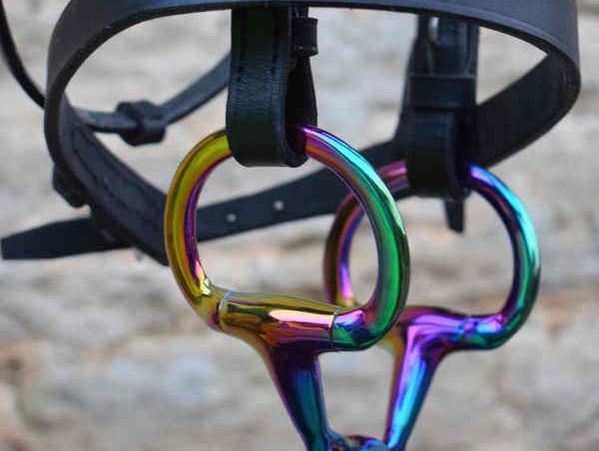 |
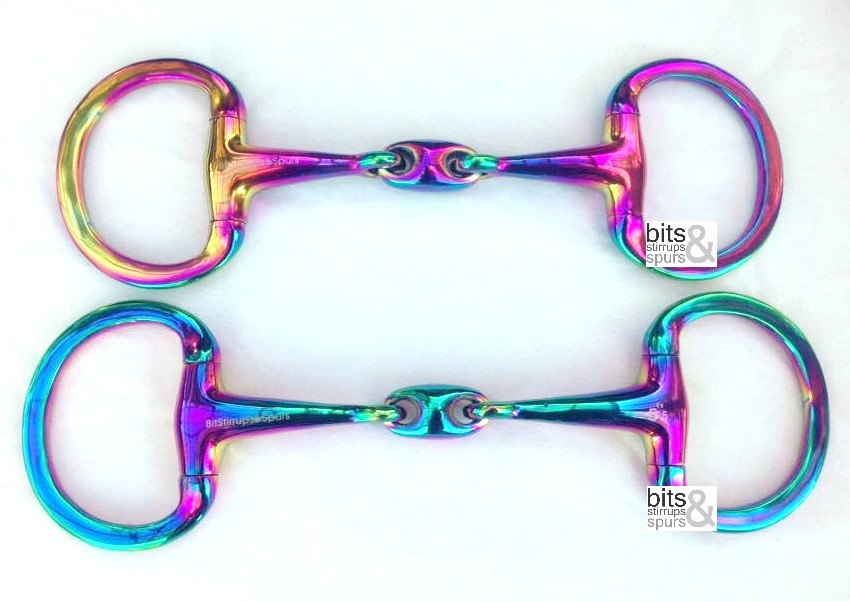 |
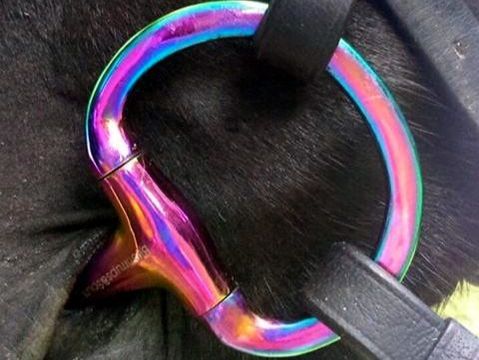 |
Quick Overview:
- Double jointed mouth piece
- Lozenge style link
- Eggbutt cheeks
- Titanium coated stainless steel
- Excellent soft/kind Bit
Titanium coated bits are tough (don't chip or wear off) and
look incredible!
The benefits to your horse make this Bit a great choice:
- Titanium acts in a similar way to copper in the horses mouth
- Sweet-tasting
- Warming
- Promotes salivation and softness
- Encourages the horse to be "more accepting of the Bit contact..."
- ...and "softer in the rider's hand"
Plus the kind double jointed mouthpiece design makes for a comfortable fit for your horse's mouth, encouraging excellent results, while looking fabulous! ...read more.
We all started out our riding days using a good old loose ring, D-ring, or eggbutt single-joint snaffle, the thicker the better. We only wanted to do the best by our horse and these ‘traditional’ single-joint Bits were the mildest Bits to use, or so we thought.
In a moment I’m going to let you know about some very basic, but super important bit-ing information, that if you don’t know already, will change your view on the common single-joint snaffle bit forever. This is information all the top riders and experts already know and swear by, and can ultimately help you to improve your relationship with your horse too.
Let’s face it, everything evolves over time, as new and improved designs and concepts are thought up and expanded on; they replace the old, work better, are more comfortable and ultimately get better results. We see it across all industries, from computers to footwear, and sportswear to saddles. So makes sense the same would be true of horse bits too, right?
Be honest, hand’s up who is still using an old style single-joint bit on their horse...
Research suggests the single-joint snaffle was first being used centuries ago, so it could be safe to say that what was once the top of the range could quite possibly be now considered outdated. Emily Esterson author of The Ultimate Book of Horse Bits: What They Are, What They Do, and How They Work, tells how “Early Indo-Aryans, Mongols and Chinese were the first serious inventors of bits, the designs of which remain in use today. Museum collections contain simple, single-jointed snaffles made of bronze that look like they could be found in tack stores today.”
Riders wouldn’t be caught dead using a saddle designed centuries ago! We have all been educated on how important the correct design and fit is for horse well-being and performance. However, while we have collectively advanced to the point where we rightly devote a great deal of attention to the fit of the saddle, there is not nearly as much focus on the Bit. For your horse, this could be a problem.
Single-jointed bits, in any cheek style, are outdated.
Just to be clear, we’re not discussing the difference between a snaffle bit or curb Bit here.
- A snaffle, generally speaking, is a Bit where the reins attach directly to the mouthpiece by a ring and offer direct rein pressure (and don’t exhibit leverage type action).
- A curb Bit does use leverage action - think Pelhams, Western Bits with shanks, gag bits etc. Anything where the rein doesn’t attach directly to the mouthpiece.
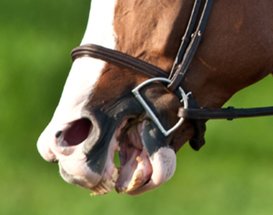 Single-joint snaffles can cause lots of problems for your horse
Single-joint snaffles can cause lots of problems for your horse
You may have heard the reference of a Bit having a nutcracker action, which is apparently not a good thing, but what does this actually mean? Well, when you pull on the reins attached to a ‘traditional’ old style, single-joint bit, the arms (sides) of the bit are pulled back, exerting uncomfortable pressure onto the sensitive bars (bare gum area, where the bit sits) of your horse’s mouth. As the Bit squeezes backwards, it proceeds to pinch the horse’s tongue between the arms. While all this is going on, the actual joint of the Bit pokes upwards and may hit into the sensitive roof of your horse’s mouth. Overall, this causes a very ‘backwards style’ of pressure and discomfort.
Here’s a quick checklist to see if this may a problem your horse is suffering from:
While being ridden, your horse:
- Opens mouth
- Shakes head
- Leans on the Bit
- Over-bends the neck
- Places tongue over the Bit
- Becomes head-high
- Struggles to come into a contact
- Doesn’t accept the Bit
- Rushes through your stop or turning aid
- Finds it hard to maintain a contact/stay on the Bit
- Hollows through the back
- Lacks forwardness/impulsion
- Gets faster when you apply rein pressure
Some people find their horse tends to go ok in their old style, single-joint Bit. But even when a horse in this style of bit is on a contact (or ‘on the Bit’), this is actually what’s often called a ‘backwards contact’. What this means is that the horse is not going as willingly forward into the bridle as it might, because at any point when the rider puts pressure on the reins, the feeling of discomfort inside the mouth often results in the horse trying to open the mouth; raise their head; or drop back ‘behind the vertical’ - all forms of bit evasion (trying to avoid the Bit), and thus a ‘backwards contact’. According to Moira C. Reeve and Sharon Biggs, authors of The Original Horse Bible: The Definitive Source for All Things Horse “research has shown that pressure of the horse’s palate (roof of the mouth) is one of the most common causes of bit problems”, and that “Horses that toss their heads, lean or place their tongues over the Bit are often trying to relieve the pressure on their palates”.
Unless all you're doing riding at a walk on a loose rein, or other riding with little, to no ‘mouth contact’, (think small child on a lead-rein pony), your horse cannot possibly be performing to his or her best in an old style, single-joint Bit. Even when used by a rider with soft hands, a single-joint Bit is generally not the best fit for great results. If you’re working towards improving your horse’s way of going in the long term, in the form of steering, stopping, control at speed, or while jumping, or correct contact and better self-carriage on the flat, then you need a Bit that is designed to comfortably fit the shape of your horse’s mouth.
You may have noticed many new fangled Bit designs making their way onto the horsey market, and I’m not trying to tell you you need to drop everything and go buy the newest, most expensive Bit contraption out. But if you are still riding around in an old style, single-joint Bit, then this may come as a wake up call to you: This Bit style may be (and probably is) causing your horse discomfort and even outright pain. This is particularly relevant for horses with a flat palate or a small mouth space, and as written by Emily Esterson in The Ultimate Book of Horse Bits: What They Are, What They Do, and How They Work, where she interestingly reveals overall horse body size does not directly correlate to horse mouth size - a big horse can have a small mouth. Esterson also states that, “while a thick, single-jointed snaffle was for years considered the mildest of all bits because it was believed that it spread the pressure across the mouth relatively evenly. However, researchers have use mouth X-rays to discover that the single-jointed snaffle Bit is not quite as benign as once thought”.
Sure, some may argue (and probably will) that horses have been ridden in single-joint Bits for ages, and ‘have been doing just fine up until now’, but have they really? This is one of those things, that as we become better educated, we can make a conscious choice to use equipment that opens up communication between a horse and rider. We now have the knowledge and resources available to us to work towards creating a ‘gilding contact’, a much more comfortable way of going for any horse involved. In the day and age we live in, with technological advances all around us, don't you think it's time that you upgrade your Bit to something that is knowingly more comfortable for your horse? So that when you get on and ride you know that you’re eliminating one more possible cause of pain or discomfort that your horse can't tell you about?
How to 10x your riding with one small adjustment
So where to from here? As much as some marketing campaigns may have your believe, you don’t have to spend ridiculous amounts of money (over $200, really?) to provide your horse with a Bit that sits more comfortably, offers enhanced communication and that can help create a wonderful gliding contact.
The magic pill? A double-jointed Bit. Double the joints is not just double the difference, switching to a double-jointed Bit can dramatically improve on the results of a single-joint, simply because it conforms better to the shape of your horse’s mouth. Double-jointed (double broken mouth) Bits include French link bits, lozenge link Bits, and Bits with rollers in the middle; anything where there is more than just the old style, solo joint in the middle of two Bit arms.
If you want to take it to the next level and 10x your riding, you need something with an even higher level of comfort and more detailed level of communication. Worth a look are Myler style Bits, or the very similar (and less expensive, but very effective) Ultimate Contact Comfort Bits. These styles offer a lovely shaped mouthpiece, which actually follow the natural contours of the inside of a horse’s mouth, increasing comfort and the horse’s ability to swallow more easily. The thinner mouthpiece suits horses with an average sized mouth, as well as the trickier-to-fit types with smaller mouths or flatter palates, and the difference in the communication level it offers is like the difference between bare fingers or wearing gloves while you’re trying to write a txt! With one of these styles, you’re opening up a whole new world of communication between you and your horse; saying goodbye to backwards contact and hello to a lovely gliding contact.
Standard double-jointed mouth pieces and the Ultimate Contact styles alike, are all available in various degrees of mildness to control, depending on which cheek pieces you couple them with. (Even straight bar or mullen mouth pieces may be better than a single-joint Bit, depending on you or your horse’s requirements). It’s important to note too, that just because you may now choose to opt for a more comfortably-shaped mouthpiece, does not mean you have to compromise on a gliding contact, or control and security when you need it. Each can offer any level of mildness or control that you may require.
All disciplines are covered; get control and steadiness while show jumping against the clock or out thundering down the cross country; and get the perfect communication device for everyday schooling on the flat and riding beautiful dressage (which is very specific on which Bits are legal or not). There are even a multitude of double-jointed Bit styles available to Western riders - still with either snaffle cheeks or curb shanks, so you really don’t have to compromise on the features that are important to you, but can still choose a mouthpiece which is more comfortable for your horse.
As a professional riding coach and horse trainer, I wouldn't recommend a single-joint snaffle to any of my clients.
It's time to take your antique style single-joint Bit off your bridle and hang it on the tack room wall as art, like the olden day relic that it is, because there are better things you can be putting in your horse’s mouth. It’s time for a Bit revolution, and for all riders to upgrade to something that your horse can actually be comfortable in, relax in and perform to his best in. For competition or pleasure, whatever your field of choice, your horse will thank you for it and you’ll never look back.
Run through this quick check list to see if it could also improve your jumping results
Does your horse:
- Lean on your current Bit?
- Rush at the fence?
- Flatten out over the jump?
- Seem to have no brakes?
- Throw his head up in response to rein pressure?
- Just not seem to listen once jumps are in sight?
The 4-ring jointed Dutch Gag could be just the ticket for you!
By combining a gentle double-jointed snaffle mouth with leverage, as offered by the lower rings, this bit provides curb-type poll pressure to help shorten and package the stride. This can help steady and balance your horse on approach to the jump, improve responsiveness to your rein aid, and ensure your horse is actually listening to you while jumping - letting you once again become the pilot, not just the passenger!
Tried it before, really?
If you've tried a 'regular' old-style, single jointed Dutch gag in the past, you may have found your horse hated it and just threw is head up/ opened his mouth to try avoid the pressure. This double jointed mouthpiece is a huge improvement on the old style. The French Link (double broken mouth) will conform around the tongue and place pressure more equally over the tongue, bars and lips. Any nutcracker effect is reduced & allows the rider independent control over the two sides of the mouth. Many horses are more comfortable with bits that conform around their mouth as it dosen't pinch and poke up into the sensitive roof of the mouth.
- The Dutch gag typically consists of four rings: the top one where the cheek pieces attach and then three lower rings.
- This is perfect because it gives you a choice of how strong you make the Bit.
- The variety of rein settings, depending on how much control is required, allow you to start of with the most basic setting, which is similar to a hanging snaffle (or Baucher bit).
- The further down you place your reins, the more you increase the leverage action, and thus the breaking power this Bit offers.
Get your jumping sorted this season!
Once you go French, you'll never go back.
by Bits Stirrups and Spurs - Your experts for horse bits, spurs, stirrups & eventing watches.
Have you gone French yet?
French Link bits consist of a 'broken mouthpiece', where there are two joints in the mouthpiece; and this is a great thing for your horse, here's why...
Benefits of a French Link: This more comfortable bit design conforms better around the horse's jaw and tongue and places pressure more equally over the tongue, bars and lips, when compared to a 'traditional' single-joint snaffle.
"Many horses are more comfortable with bits that conform around their mouth, resulting in a more relaxed and willing partner."
Could a French Link be a better option for your horse?
Do you currently ride in a single-joint bit and experience any of the following:
- horse lifts head or throws his head up when you pull on the reins
- horse heavy or hard to steer one way (or both ways)
- horse leans on the Bit
- hard to get horse to accept a contact
With a French Link Bit, any painful nutcracker effect is reduced; the separation of the mouthpieces allows the rider independent control over the two sides of the mouth; the French Link mouthpiece is available with various cheek pieces to suit your discipline and meet the requirements of your horse.
Which French Link will be best?
> Training, schooling, flat work & youngsters: Loose Ring with Copper, or Full Cheek
